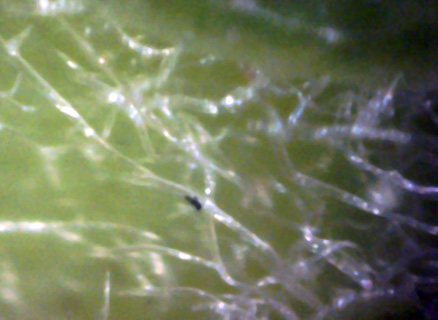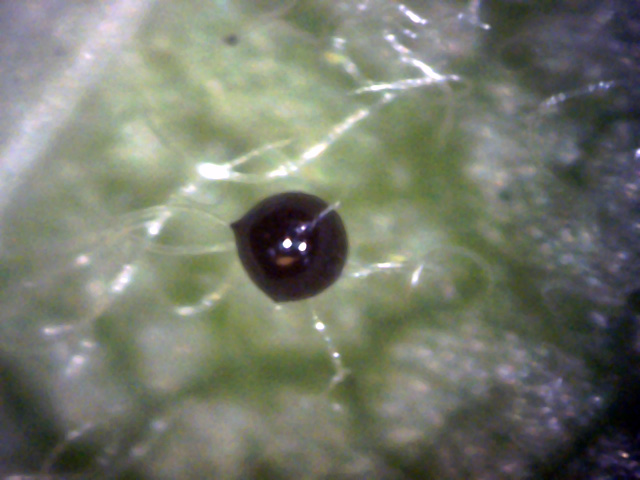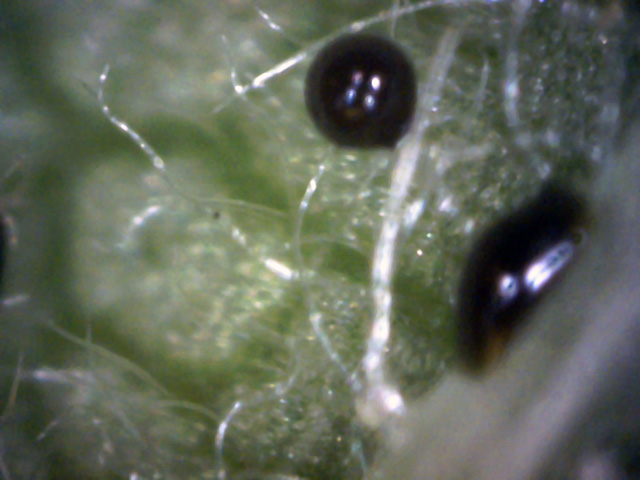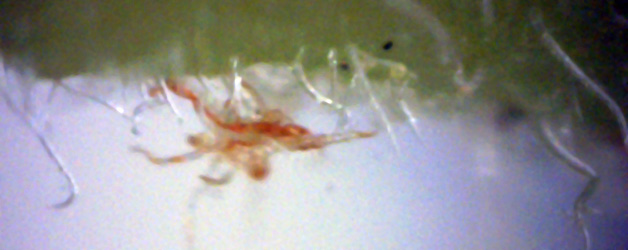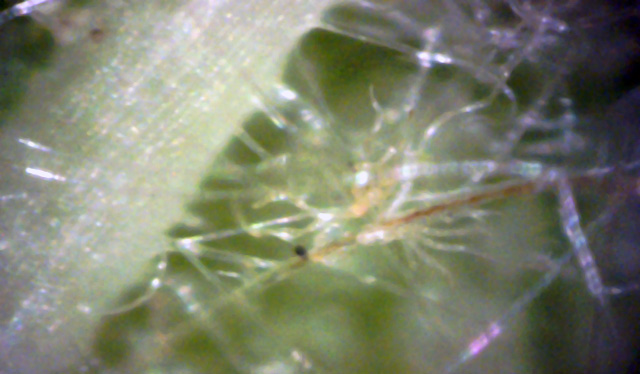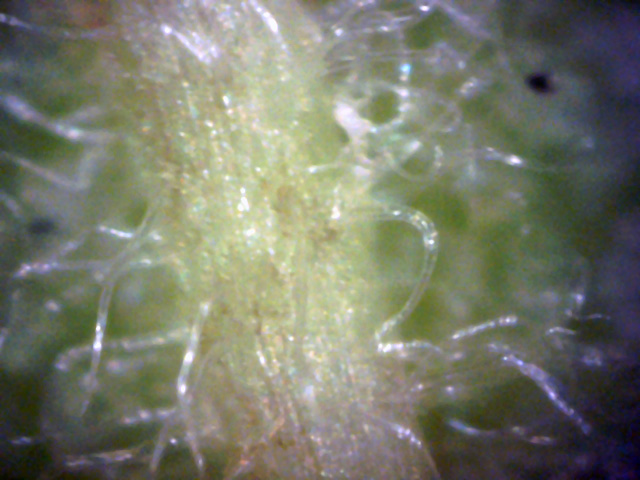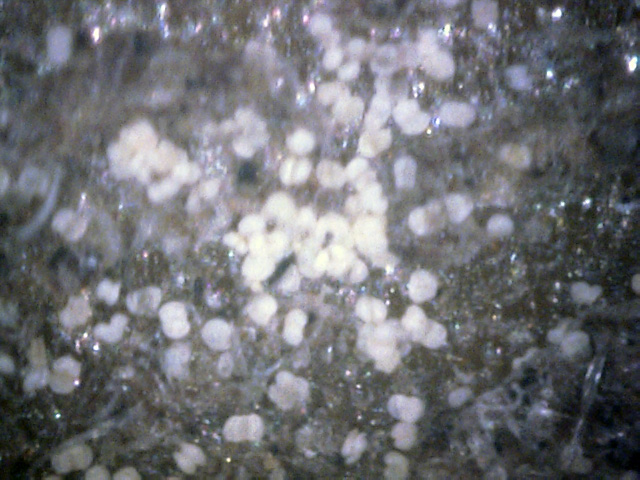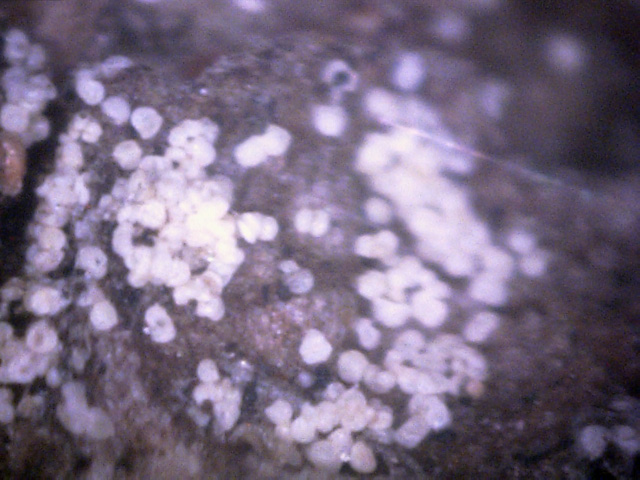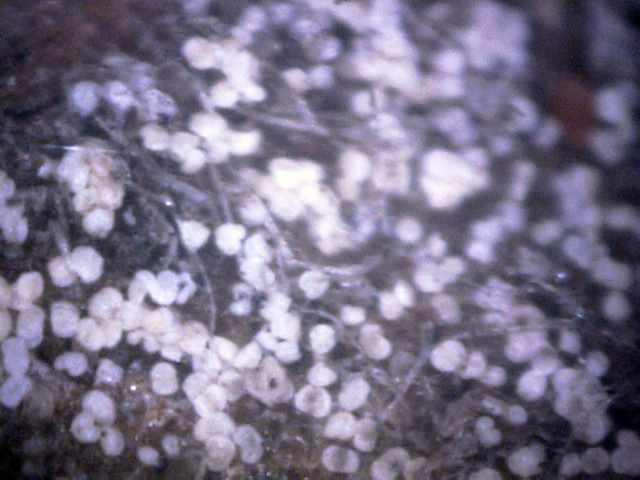This is one of those relatively new "Dutch Elm disease-resistant" trees.
It's a fairly young tree, only about 8' tall and was planted in an attempt to bring
back the beautiful elms, which at one time were so abundant on our city streets.
About 20% of the leaves were suffering from insect damage, having holes eaten out of them.
I wondered if that was because the tree was somewhat weakened.
Except for this insect damage, the leaves didn't look bad at all.
This data was gathered in early June, 2008.
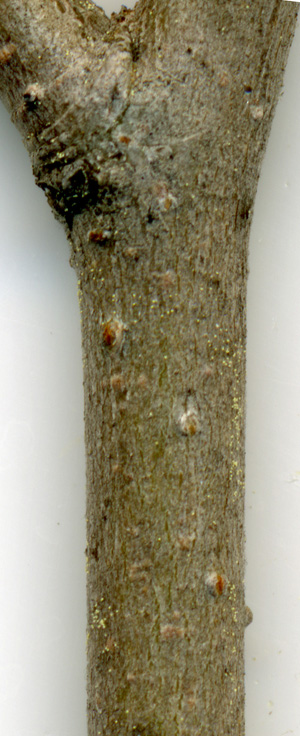
1
As you can see, this quarter-inch branch has relatively few
spores present (the light-yellow dots), and they don't seem to be clustered
at the branch junction.
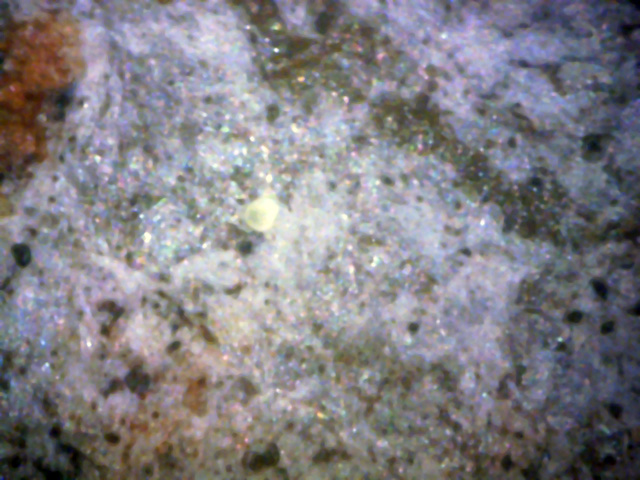
2
There seems to be a thin, transparent substance on the surface of the bark here.
A single spore is also present.
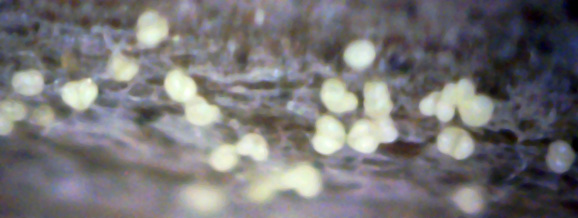
3
There are many young spores present here, and they seem to have created a tangled
web of hyphae around them.
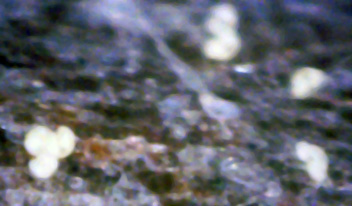
4
More spores are present here. They all have basically the same shape and color.
Quite a bit of translucent cankerous material is also present.
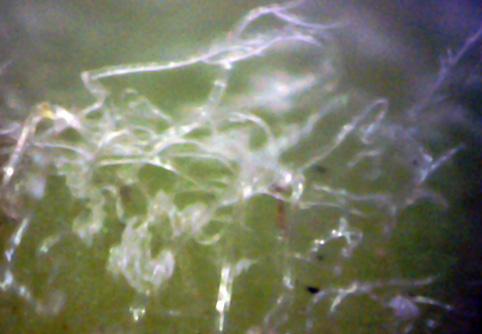
6
Tangled leaf hyphae on the bottom of a leaf at 400x.
It's said that the hyphae do the real damage to a plant.
The bottom of this leaf contained a large number of these hyphae.
On the other hand, these hyphae didn't resemble normal white canker hyphae.
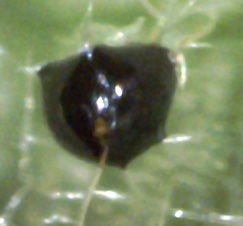
8
These pictures show more hyphae on the leaf bottom, along with some strange large dark
globular objects.
These objects are clearly connected to the hyphae, and could be what are called
"resting structures", technically known as
chlamydospores.
These object's strong resemblance to chlamydospores increases the probability
that white canker is a fungal disease. On the other hand, the hyphae associated
with these objects doesn't look like typical white canker hyphae.
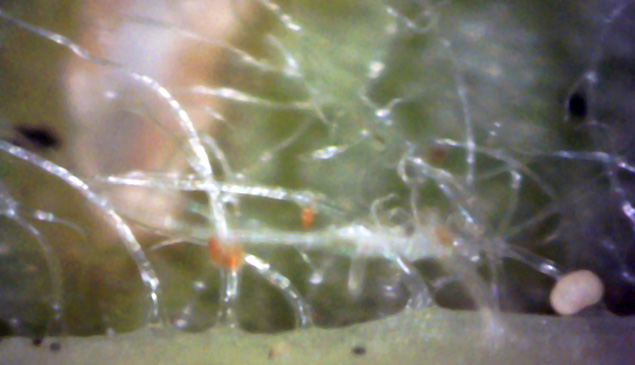
12
These pictures show even more hyphae, but here they are associated with the bottom leaf vein.
Some of the branching is clearly spider-like, which is termed a mycelium.
However, once again, the shape of this hyphae (round) is not characteristic of white canker
(ribbon-like), even though both are translucent in appearance.
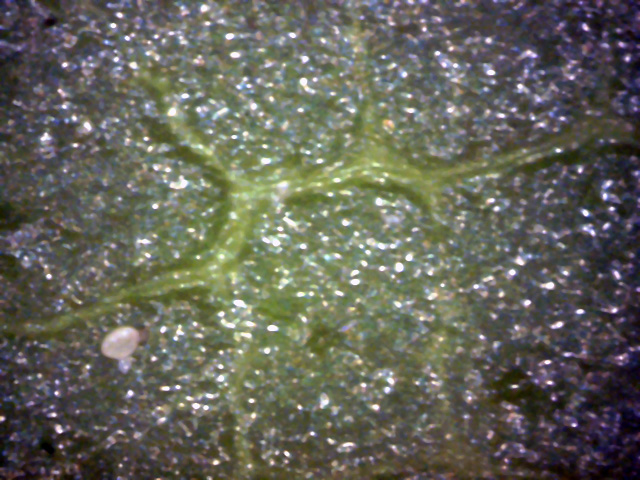
13
As this picture shows, the top of the leaf had only a few hyphae.
One spore and hypha is shown here. You can just barely make out the hypha it has generated.
The bottom of the leaf had almost no spores.
Since the evidence for a white canker infection didn't seem conclusive, I returned to examine
this tree in early November. While no leaves were present, the bark seemed to be splitting in
some areas, particularly around the branche junctions. I clipped off one branch for examination under
a microscope. The results are shown below.
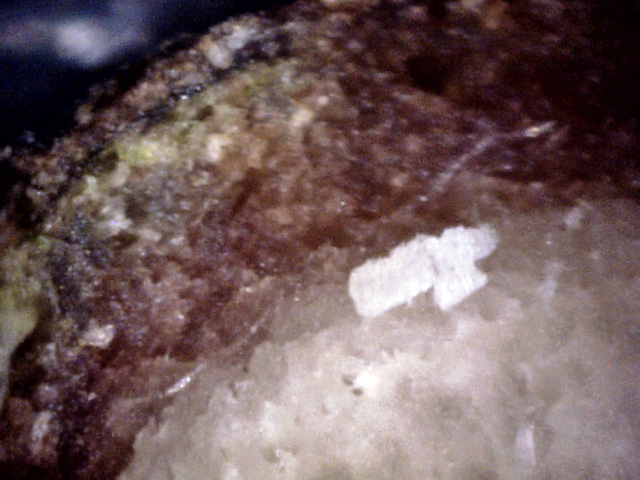
14
The green cortex under the outer bark is barely present.
The phloem under it is an unhealthy brown.
Particles of white canker are present, as is a hypha.
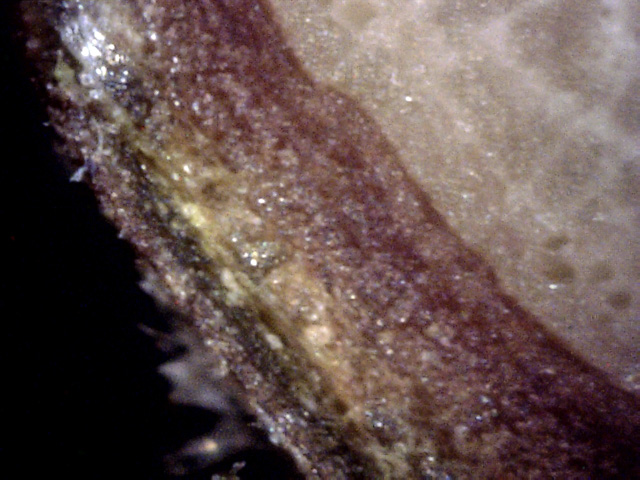
15
The green cortex under the outer bark is virtually gone.
The phloem under it is an unhealthy brown.
Particles of white canker are present at the cortex-phloem junction, soaking up
any remaining nutrients.
These particles have the size, shape, and color of white canker spores.
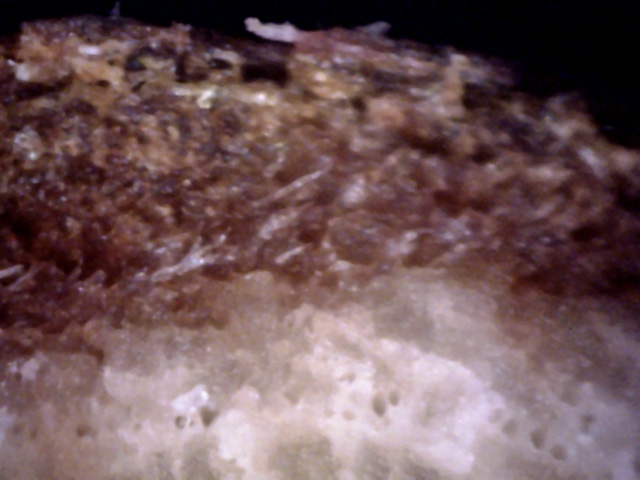
16
The green cortex under the outer bark is totally gone.
The phloem under it is an unhealthy brown, has a rough texture, and has hyphae
embedded within it.
The above cross-section views of a 3/4 inch twig provide strong evidence of white canker.
The bark of the twig was examined next. Few spores were found between branch nodes.
In contrast, there was a large sprinkling of white canker spores at the branch nodes, as shown
in the pictures below.
In conclusion, it appears that this elm has been newly infected with white canker.
However, the numerous hyphae and dark globular objects seem to hint that some other infection is also
taking place.
Nevertheless, the late fall twig cross-sections show that a white canker infection is taking
place. The abundance of white canker spores at the branch junctions (nodes) provides the most
convincing evidence of white canker. I expect to see a serious decline in the health of this young
tree next summer.
